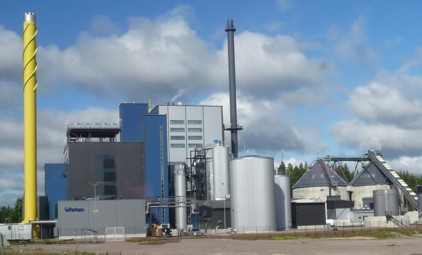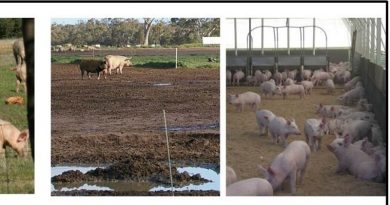Letter from Finland where biomass is leading energy source
By Andrew Lang
I am sitting in a small hotel in Finland having woken up early by my brain which is still confused about the time when daylight is appearing. This small city is administrative capital of the region of Central Finland which, as you’ll all know thanks to our superbly informed media, produces over 50% of its primary energy from biomass. This means that across the region for every household and industry most heat and most electricity comes from biomass. By 2020 the target is for 75% of primary energy to come from biomass and so almost all heat, almost all electricity and some transport biofuels.
Some might say that this is done because of some weird Nordic unsustainable forestry practice and others might accuse the Finns of faking the books by classifying peat in as a form of biomass fuel (which of course it is if you think in 100 year time spans which of course they do here). But in fact it is achieved by utilizing waste wood and residues from regular highly sustainable management of the slow growing forest resource – which is mostly owned by families and individuals. For most it has been in the family for generations and they value it for many other reasons than the sawlog harvest product once every 70-90 years.
The forest is everywhere in Finland. What is not lakes and rivers (which make up about 10% of the land area), or arctic mires (another 10%), or arable and pasture land (maybe 15%) is forest. At this time of year (autumn) it is looking good and the birch trees that are the most obvious hardwood (‘hard’ being a very relative term in this part of the world) bear leaves that are just starting to turn.
The new combined heat and power (CHP) plant we visited yesterday is an example of what is commonly found everywhere in Denmark, Sweden, here, and in a few other enlightened countries. It takes in woodchip (maybe 150,000 tonnes a year) and produces about 23 megawatts of electricity. About 22 MW of this goes into the national grid, providing for over 30,000 energy-efficient Finnish homes. Normally none of these will use electricity for heating, but only for cooking, appliances and lighting.

Heating for houses and industry within about 10-20 km radius of this plant comes from the 45 MW of heat that is the inevitable result of combustion, and that goes into the local district heating grid. This means that this CHP plant is over 90% efficient, or putting it another way, that over 90% of the energy value of the fuel winds up as energy able to be utilized. By contrast Victorian brown coal- fuelled condensing power plants have 25-30% efficiency, and an open cycle natural gas turbine generator is about 40% efficient.
A final point about the heat is that the profitability of the plant depends on the sale of this heat. In the Finnish market, as in most including ours, heat can be more costly per megawatt-hour (MWh) than electricity. So the electricity sells into the Nordic electricity pool at the spot price of the moment – usually 40-50 Euro/MWh. While the heat sold to households, and measured at heat exchangers at each point of withdrawal of heat energy from the loop, is priced at 65-70 Euro/MWh. Annually this plant will produce 280,000 MWh of heat and 130,000 MWh of electricity. So if you do these figures you can see it is starting to look like a nice little earner grossing about 26 million Euros a year from energy sales.
Of course you have to take the price of the fuel from that gross return and also the interest on the capital cost and the cost of wages and overheads (these I figure total about 16 million Euros a year). Even so the investment by the power company in this plant is on the basis of getting a good return on the investment over time.
This brand new plant cost about A$100 million (80 million Euros) and so has a capital cost per MW capacity of about A$5 million. This compares very well with onshore wind as the wind turbines have a production factor of about 35% at best while the biomass-fuelled plant has a capacity factor of 95% or better. In other words one is a totally predictable source of baseload electricity (and heat) and the other is intermittent and seriously unpredictable.
In Victoria where we have a series of old and inefficient condensing plants needing to be replaced this should be an issue in the question of whether to replace each 1000 MW of capacity with 1000 MW of more modern coal-fired plants equipped with carbon capture and storage technology (effectively tripling the capital cost/MW and soaking up up to 25% of electricity produced), with closed cycle natural gas fired turbines (about 60% efficient but requiring large amounts of potable water for cooking the steam cycle), or smallish biomass-fuelled plants near biomass sources and heat users.
I know I have left out solar PV but somehow I find the fact that stimulating solar PV (it having driven German electricity retail prices though the roof, and having bankrupted the Spanish government) is a bit of a worrying point. Solar in Australia is obviously far more sensible than in Germany but it is still a very costly way of making electricity and still requires maintaining the full array of baseload fossil-fuelled plants on standby for the cloudy, rainy weather and for short gloomy winter days (and for night time of course, and the nuclear winter…). So, sorry, but biomass-to-energy appears to be the way to go, and the sooner the Greens and their fellow travelers realize this renewable needs some serious consideration the better off we will be.
Find out more:
Andrew Lang is farm forester at Lismore, Victoria, he is a Board member and Vice President – World Bioenergy Association , andrewlang001@yahoo.com.au



